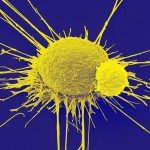Link to Pubmed [PMID] – 11714775
J. Immunol. 2001 Dec;167(11):6158-64
We studied Rag2-deficient mice bearing two rearranged alphabeta TCR transgenes, both restricted to the MHC H-2D(b) class I molecule. We have previously shown that, in these DTg mice, most peripheral CD8 T cells express one TCRbeta chain associated with two TCRalpha chains, as in one-third of the mature T cells from normal mice. We examined the functional behavior of the dual-receptor CD8 T cells developing either in the absence or in the presence of self-Ag. The dual-receptor CD8 T cells, which develop in absence of self-Ag, show efficient responses to immunization and remain sensitive to induction of peripheral tolerance. In contrast to single TCR T cells, the dual-TCR cells, when tolerized upon exposure to high levels of self-Ag, are not deleted and therefore may exert important regulatory functions. When developing in the presence of self-Ag, the dual-receptor-expressing CD8 T cells escape central deletion, but are not fully competent to respond to cognate stimuli. Overall, we found that the dual-TCR CD8 T cells show a poor competitive value and can be out-competed by single-TCR cells, both in the course of immune responses and in reconstitution experiments. The decreased fitness of the dual-receptor cells may contribute to diminishing the autoimmune hazard that they could represent.


